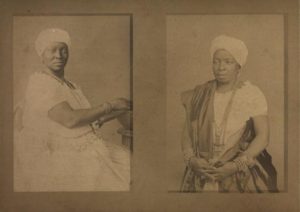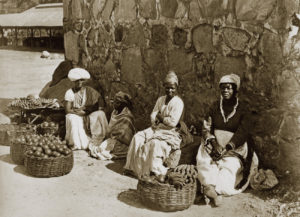 Currently, I am working on a book manuscript entitled “Birthing Abolition: Enslaved Women’s Reproduction and the Gradual End of Slavery in Nineteenth-Century Brazil.”
Currently, I am working on a book manuscript entitled “Birthing Abolition: Enslaved Women’s Reproduction and the Gradual End of Slavery in Nineteenth-Century Brazil.”
The project explores the manner in which enslaved women’s reproductive practices informed the gradual abolition of slavery in the middle to large slave holdings of Rio de Janeiro state from the 1820s (the first attempts to end the country’s slave trade) to final abolition in 1888. Like most Atlantic slave societies, the Brazilian slave population was reproduced through imports and not natural growth, with a few regional and temporal exceptions.[1] For 19th-century Rio de Janeiro state, historians have argued that harsh labour regimes, disease, and sex imbalances caused negative growth.[2] For the US and Caribbean, however, feminist historians have approached negative growth both from the viewpoint of harsh labour regimes and disease and through the lens of “reproductive resistance”, or the enslaved practices of abortion, infanticide, and contraception as purposeful attacks on the institution of slavery.[3] But for Brazil, scholars have dismissed the quantitative impact of the enslaved practices of fertility control on the population’s growth. Enslaved women’s fertility control may not have caused the negative growth of the enslaved population in 19th-century Rio de Janeiro. However, this project hypothesizes that enslaved women’s fertility control practices played an important symbolic role in how elites understood and approached slavery itself.

To analyze the interplay between slave agency, elite views, and abolitionist actions, the project asks three questions: 1) How did both slave-owners and political elites view enslaved women’s reproduction? 2) How did enslaved women experience reproduction—including pregnancy, childbirth, abortion, and infanticide? 3) How did both elite views and enslaved women’s reproductive agency contribute to gradual abolition? The project posits that a gender analysis will demonstrate that the spectre of enslaved women’s fertility control created the opportunity for abolitionists to implement the legal framework that abolished slavery.
[1] Laird W. Bergard, Slavery and the Demographic and Economic History of Minas Gerais, Brazil, 1720-1888 (Cambridge, 1999). Also Michael Tadman, “The Demographic Cost of Sugar: Debates on Slave Societies and Natural Increase in the Americas”, American Historical Review 105, no. 5 (2000): 1534-75.
[2] Mary C. Karasch, Slave Life in Rio de Janeiro, 1808-1850 (Princeton, 1987).
[3] Angela Davis, “Reflections on the Black Woman’s Role in the Community of Slaves”, The Massachusetts Review 13, no. 2 (1972): 81-100; Jennifer L. Morgan, Laboring Women: Reproduction and Gender in New World Slavery (Pennsylvania, 2004).
Image 1: Mark Ferrez, “Escravas, 1870-1899” (Arquivo Nacional, Rio de Janeiro, Brazil)
Image 2: Mark Ferrez, “Quitandeiras [slaves who earn], 1875” (Instituto Moreira Salles, Rio de Janeiro)